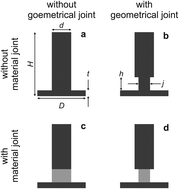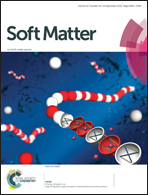Material gradients in fibrillar insect attachment systems: the role of joint-like elements
Abstract
Insects have developed elaborate fibrillar (or hairy) attachment systems that allow them to attach reliably on a variety of different and unpredictable surfaces. These hairy adhesive pads consist of fine and long surface outgrowths (setae), terminated by thin plate-like tips of different shapes. Besides structural adaptations, recent work revealed material gradients along the length of the setae with spatula-shaped and pointed tip structures. It was shown that these setae have a rigid base and soft setal tips, which is assumed to enhance the adaptability to rough surfaces and prevent clustering of the setae. Here, we show a not yet described type of material gradient found in discoidal (or mushroom-shaped) setae of male leaf beetles. In contrast to the previously shown gradient, the setal tips and the basal and central seta sections are composed of relatively stiff chitinous materials, whereas the transition zones between the central seta sections and the setal tips contain large proportions of the rather soft and elastic protein resilin, forming a joint-like element. Having performed adhesion measurements with artificial macroscopic mushroom-shaped adhesive structures with different implemented joint-like elements, we show that the main functional role of these joint-like elements is to facilitate the adaptability to uneven and non-parallel substrates, rather than to provide detachment tolerance towards pull-off forces applied under various tilt angles.



 Please wait while we load your content...
Please wait while we load your content...